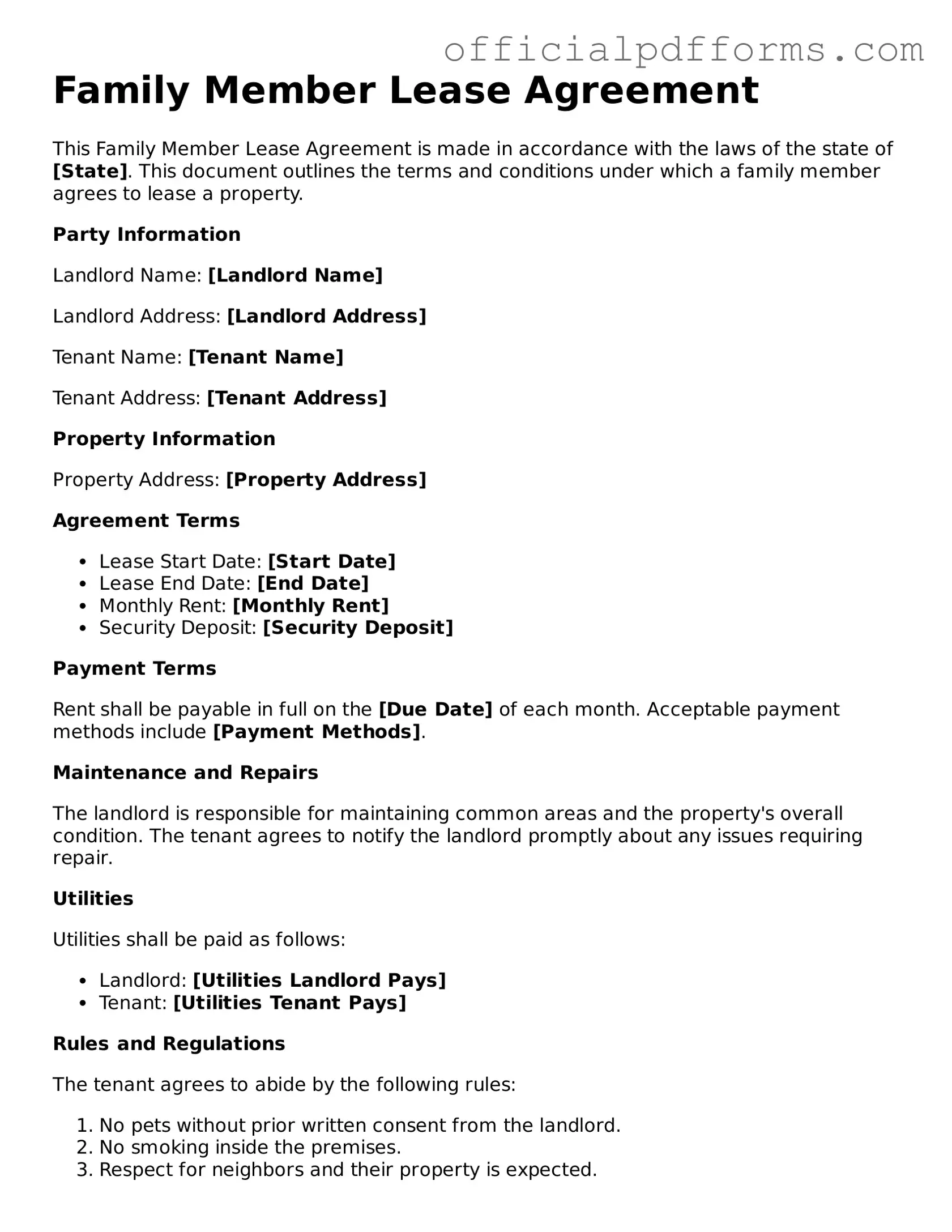What is a Family Member Lease Agreement?
A Family Member Lease Agreement is a legal document that outlines the terms under which a family member can rent a property from another family member. This agreement helps clarify expectations regarding rent, responsibilities, and other important details, ensuring both parties understand their rights and obligations.
Who should use a Family Member Lease Agreement?
This agreement is suitable for family members who wish to formalize a rental arrangement. It can be used by parents renting to adult children, siblings sharing a home, or any other family member entering a rental situation. Using this document can help prevent misunderstandings and maintain family harmony.
What key elements should be included in the agreement?
A comprehensive Family Member Lease Agreement should include the following elements:
-
The names of the landlord and tenant.
-
The property address.
-
The rental amount and payment schedule.
-
The duration of the lease.
-
Responsibilities for utilities and maintenance.
-
Rules regarding guests and pets.
-
Conditions for terminating the lease.
Is it necessary to charge rent?
While it is not mandatory to charge rent, doing so can help establish a professional relationship and clarify expectations. Charging a nominal rent can also have tax implications, which may be beneficial for the landlord. However, if no rent is charged, it is still advisable to document the arrangement to avoid potential disputes.
Can the lease be verbal, or does it need to be written?
While a verbal agreement can be legally binding, it is highly recommended to have a written lease. A written document provides clear evidence of the terms agreed upon and can help prevent misunderstandings. In the event of a dispute, having a written lease can serve as important proof of the agreement.
What happens if one party wants to terminate the lease early?
The process for terminating the lease early should be outlined in the agreement. Typically, it will include a notice period that the tenant must provide to the landlord. Both parties should agree on the terms for early termination, including any penalties or conditions that apply.
Can the lease be modified after it is signed?
Yes, the lease can be modified if both parties agree to the changes. Any modifications should be documented in writing and signed by both the landlord and tenant to ensure clarity and legal validity. Verbal agreements about changes may not hold up in the event of a dispute.
What if there is a dispute between the landlord and tenant?
If a dispute arises, the first step is to communicate openly about the issue. If that does not resolve the problem, the lease may specify a method for dispute resolution, such as mediation. If necessary, legal action can be taken, but it is often best to try to resolve matters amicably to maintain family relationships.
